Since the sport of scuba diving began the gear has come a long way. Initially divers would venture underwater with oxygen tanks and a hose. As technology improved divers began wearing more and more gear. Eventually the use of BCDs and wetsuits meant that divers could be more buoyant underwater. This meant they now needed a better way to counteract that buoyancy. Proper Weighting means you can easily control your buoyancy at any depth allowing you to sink, stay neutral, or get positively buoyant easily without much effort required.
In this guide we will describe buoyancy, proper weighting, weight types, and answer some commonly asked questions.
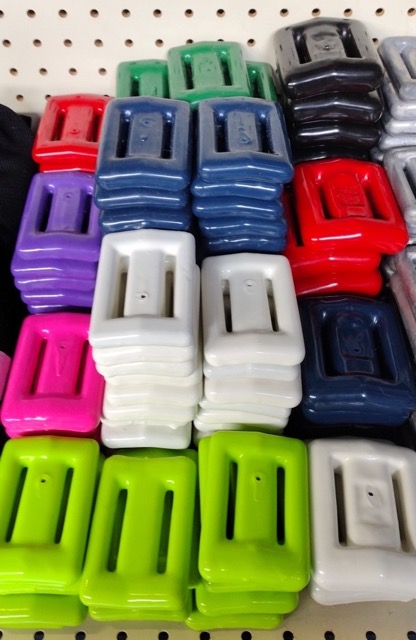
Article Sections
About Your Buoyancy
A diver’s buoyancy is determined by the weight of the water they are displacing minus the weight of the diver and all of their gear. If the diver and their gear weigh more than the water they are displacing they will sink. If the diver and their gear way less than the water they displace they will float.
Another way to look at buoyancy is density. If water is denser than an object in it, the object will float. If the object is denser than the water it is in, it will sink.
Elements Effecting your Buoyancy underwater
- Your Body
- Tank
- BCD
- Wetsuit
- Mask
- Weights
- Salt in Water
Densities of divers and their gear
- Your body 1.076 –
- Wetsuit
- Tank
- BCD
- Weights 11.29
Your Body
The human body can vary in density based on several factors1 Typically a young male will be more dense than an older female. This is because of the ratio of fat and muscle varies with sex and age. Females will be less dense than males and older humans will also be less dense than younger humans.
Factors Effecting Buoyancy in Your Body
- Lung Volume
- Muscle
- Fat
- Bones
Lungs
Beginning with your body there can be a large difference in your buoyancy even when inhaling and exhaling your breath. This is one of the best ways for scuba divers to control their buoyancy. For freedivers they must rely on proper weighting to get the most out of their one breath on the surface.
When fully exhaled a small human can have as little as 1 liter of air left in their lungs while a large person with freediving training can have as much as 10 liters or more. This is a difference of 9 kg or 20 lbs!
Muscle
The muscle in your body is denser than water at 1.06. The more muscle your body has in proportion to the rest of you the more you will sink in the water.
Fat
Everyone has a minimum amount of fat in their body as it is a necessary component of being mammals. Males typically have less fat as a percentage of their body than females. Fat has a density of 0.92.
Bones
Bones make up a small proportion of our overall body weight but they do still make a difference in our buoyancy. Typical human bone density can range from 1.186 – 0.937 with women typically having denser bones than men and both sexes becoming less dense as they age3.
Dive Gear
Tank
If you’re scuba diving the tank filled with air on your back will typically be heavier than the water it displaces. As you breathe the compressed gas inside of it during your dive it will slowly become lighter because the concentrated gas weights less as it leaves the tank and becomes less concentrated.
As you near the end of your dive you will want to remain neutrally buoyant. It’s important for a diver to weight themselves in anticipation of their buoyancy when their tank is near empty not when it’s full.
Typically aluminum tanks (the most common rental tank) will begin the dive slightly negatively buoyant and end the dive positively buoyant. Kona Honu Divers uses negatively buoyant aluminum tanks with thicker walls so you will end your dive with a neutral tank.
Steel is heavier and stronger than aluminum. This means a steel tank will typically begin and end a dive negatively or neutrally buoyant. The advantage of this is you won’t need to carry as much weight on your person while diving because the tank is less buoyant.
An aluminum tank can be negative 1.6 lbs when full and 4.1 lbs positively buoyant when empty
Check out this tank chart. Pay special attention to the buoyancy when empty column.
BCD
The BCD (buoyancy compensation device) was a necessary introduction when the wetsuit became a standard piece of gear. As a diver descends and their wetsuit becomes less buoyant the diver becomes heavier. The BCD allows a dive to fill it with a bit of air to make the dive r more buoyant at depth.
Many BCDs will be slightly positively buoyant even when they don’t have any air in them. This is because of the materials they are made from. The average BCD will be anywhere from slightly negative to 1.5 lbs positively buoyant.
In the market for a BCD? Check out the Scuba Diving Magazine 2022 Testers choice picks:
Wetsuit
A wetsuit is designed to insulate a diver from water. In order to do this it’s made with small bubbles inside a rubber compound. The bubbles of gas act as an insulator from the water. As a dive descends the bubbles in the wetsuit compress from the increased pressure. This means the bubbles become less effective at insulating and make the suit less buoyant as the diver goes deeper.
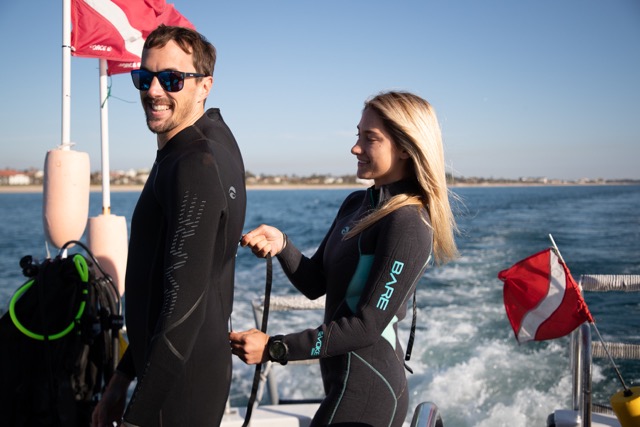
Alternatively there are diving suits that don’t use neoprene like Bare’s Exowear that will help keep a diver warm without adding any additional buoyancy by keeping a warm plush lining against the skin. While not as effective as a wetsuit at keeping a diver warm, they are more compact, less buoyant, and still protect the diver from ocean hazards.
Mask
A mask is basically a flat piece of glass with an air space to allow us to peer through the glass. That air space, while small, will naturally create some buoyancy when we are underwater. The bigger the mask, the more positive buoyancy we will experience. Masks like the TUSA Freedom HD even have weights integrated in the frame to keep it from floating off your face!
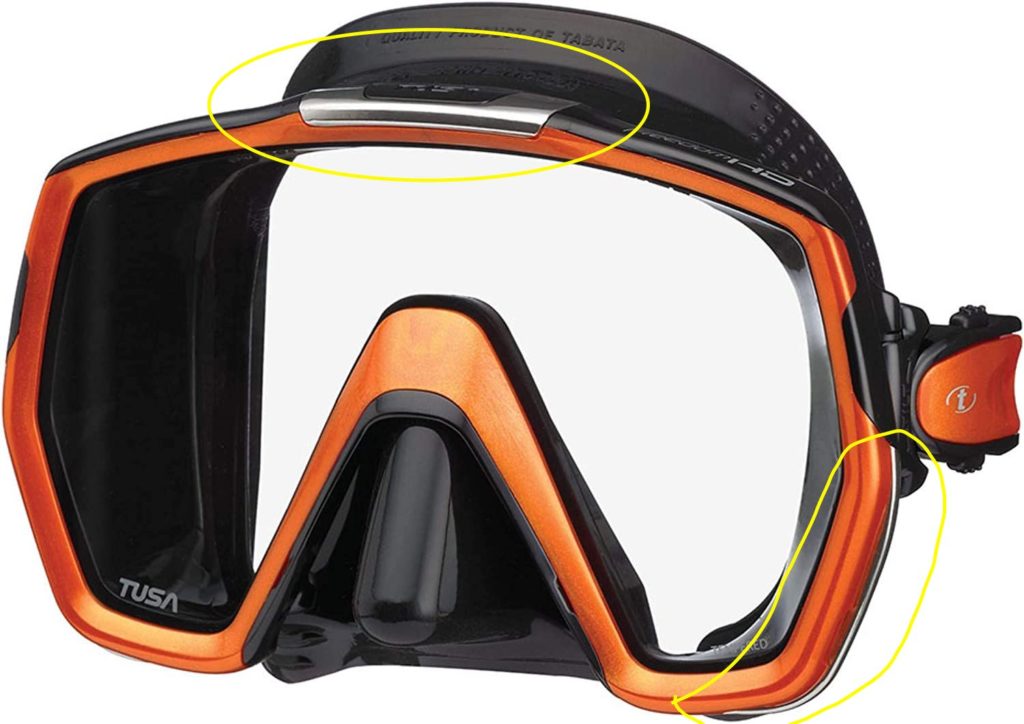
Weights
Dive weights are typically made from lead. This is an inexpensive metal that is relatively resistant to rust and is quite dense and has a high molecular weight compered to water. Lead is about 10x denser than the human body. Sometimes lead weight will be wrapped in rubber. This protects the lead from degradation and makes it look neat but increases buoyancy slightly.
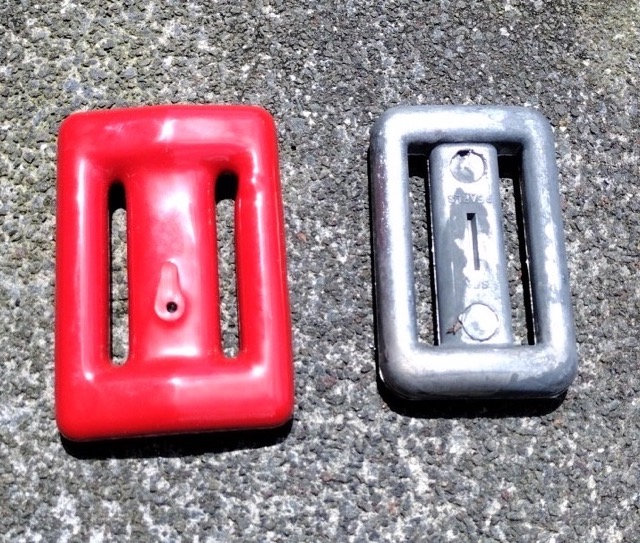
Salt in Water
All water in nature will have a small amount of salt in it. Fresh water typically has a very small amount while the ocean typically has between 33 – 37 parts per thousand. When salt is in the form of a rock before it is dissolved in water, weights more than water. When it becomes dissolved in water it makes the resulting water solution denser or heavier than fresh water.
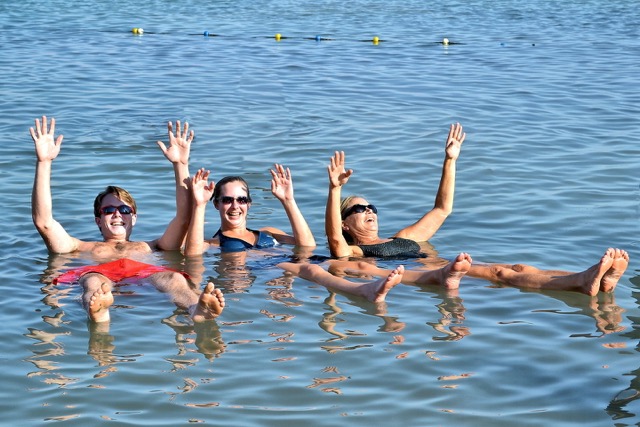
A diver that is neutrally buoyant in fresh water will become buoyant in seawater. This means a diver will want to wear more weight in seawater than in freshwater.
The density of fresh water is typically just over 1 and sea water is between 1.02 – 1.03.
Proper Weighting
Proper Weighting for Scuba Diving
If you have the right amount of weight you will be able to descend at the end of a dive with an empty tank and maintain neutral buoyancy just below the surface with a nearly full breath. Why at the end of the dive? This is because your tank gets lighter as you breath from it.
To determine how much weight you will need for scuba diving you need to know:
- How thick is your wetsuit/drysuit?
- How buoyant is your tank when empty?
- Is the water salt or fresh?
- What is your body’s natural buoyancy?
A diver with a steel tank in warm fresh water may not need any added weight until they dive in the cold ocean with an aluminum tank.
Wetsuit Buoyancy
It can be challenging to properly calculate the buoyancy of a wetsuit with there being so many sizes and thicknesses on the market. When you add in a hood and boots plus gloves the difference is large. So how do you go about figuring this out?
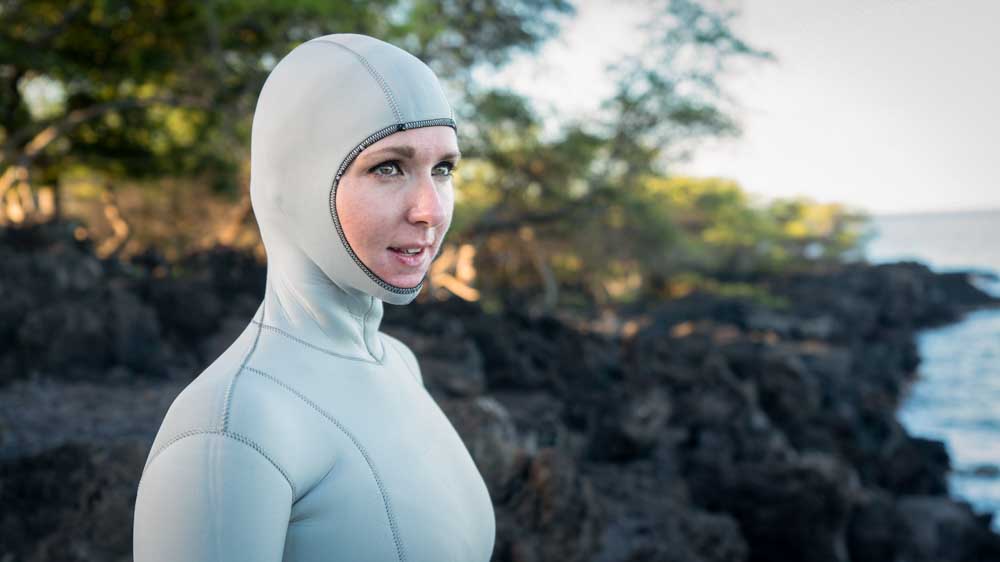
Tank Buoyancy
Most tanks are negatively buoyant when empty and many aluminum cylinders are positive when empty. Check out this extensive list to see what your tank will be at the end of a dive. The most common cyclinder is the Catalina Aluminum 80 used for rentals worldwide. This tank begins the dive negative 1.6 lbs and ends at +4.1 when empty.

This aluminum tank by Metal Impact begins as -1.5 and ends +4.26
Proper Weighting for Freediving
In freediving proper weighting means you will be buoyant on the surface of the water, neutral at the 1/2 way point in your dive and negative from 1/2 way to the bottom.
A quick and easy way to check your buoyancy/weighting when freediving is to float still on the surface with a full breath of air. When properly weighted the water should come up to where your neck meets your shoulder (your collarbone).
A better way to assess weighting in the water is by first performing the check above and then verifying by diving to 1/2 your intended depth and floating still. For example if you plan to dive to 20 ft/m then dive down to 10 ft/m and hold still. If you float up towards the surface add some weight, if you sink take some weight off, and if you stay at the same depth for a while you are perfectly weighted.
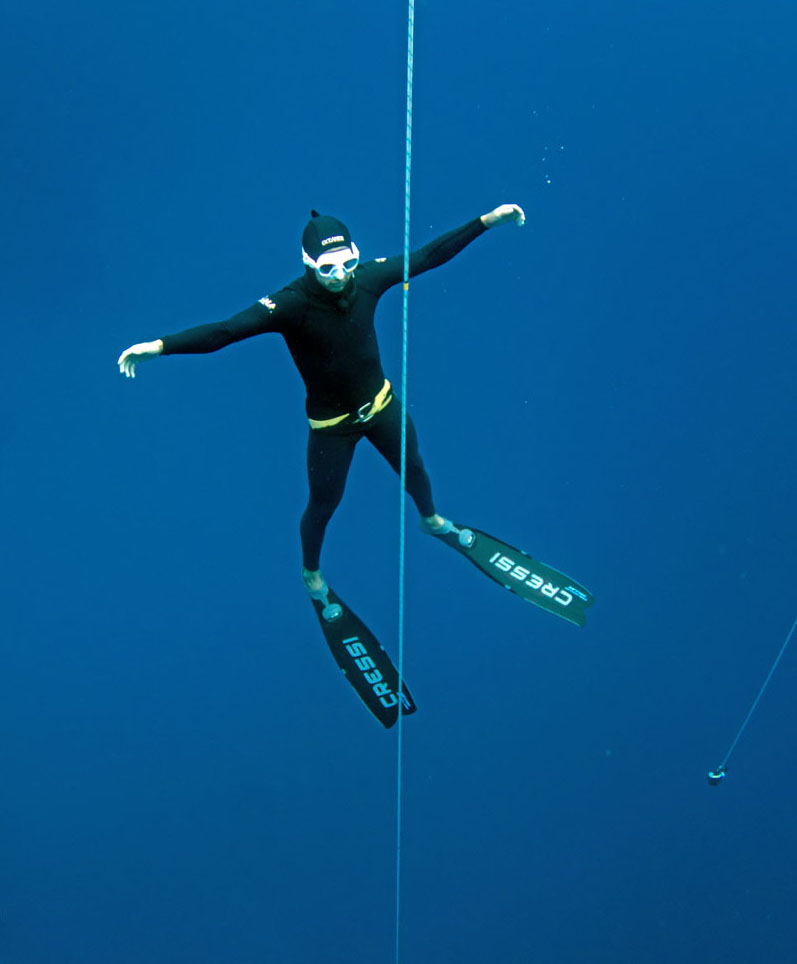
Why is this the correct way to weight a freediver? It’s both the most efficient and safest way. Take a level 1 freediving course to find out why and how to apply this skill and many more.
Types of Dive Weights & Belts
There are essentially two kinds of weighting systems. One for scuba divers and one for freedivers.
Scuba Diving Weighting
Weighting for scuba diving is typically more complicated than weighting for freediving but it is also more forgiving. If you underweight yourself in scuba diving it will make the dive uncomfortable and short and could be dangerous. This leads many divers to overweight themselves. As a result divers will typically compensate for this extra lead by adding air to their BCD (buoyancy compensation device). This means that as they near the end of their dive and the tank becomes lighter and they go shallower they will typically have less air in their BCD than when they started the dive.
The most common way divers weight themselves is by adding weights to their BCD. This means they won’t have to use a weight belt. Most BCDs today have weight pockets that are detachable should the diver need to drop the weights in an emergency.
Freediving Weighting
Freedivers typically wear wetsuits. This means they will usually need some amount of weight when they dive even if only a small amount. Freedivers typically use weight belts but can also use neck weights.
Weight belts
Freediving weight belts are different from scuba weight belts. Scuba weight belts are traditionally made of nylon webbing. This means they do not stretch. Freediving weight belts are made of rubber.
Weight Types
Lace-through
The most commonly used type of weight for weight belts, lace-through weights are easy to use and adjust while staying put when you’re diving. They can come in weights of 1,2,3,4,5,6,8,10,12 lbs. When freediving you will typically not be using the larger weight sizes since they make it harder to fine tune your buoyancy and freedivers don’t typically need a lot of weight compared to scuba divers.
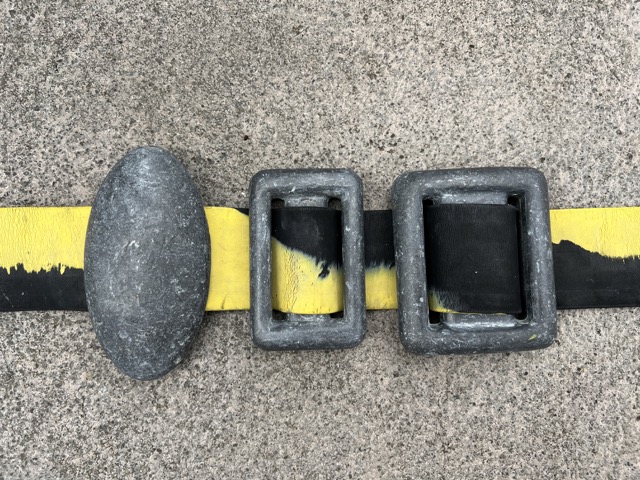
Bullet
Bullet weights are easier to put on a belt and move around once the belt is on a diver. It’s important to make sure the slot is wide enough to accommodate a thicker belt if you’re using the marseilles style with a metal buckle. Bullet weights usually come in 1-3 lb increments.
Lead Shot
Lead shot is what is usually found in bag weights. You can cut open a bag weight and use that shot or just buy lead shot in bulk. Freediving shops like Kona Freedivers may carry lead shot at the store. To use it you can craft a neck weight out of a bycicle tube, a clip, and some tape. You can put this custom weight around your neck or your waist. This is common for deep and competitive freedivers especially for pool swimming where much of the buoyancy is near the front end of a diver as they swim horizontally.
Check out this Kona Freedivers guide on how to make a freediving neck weight.
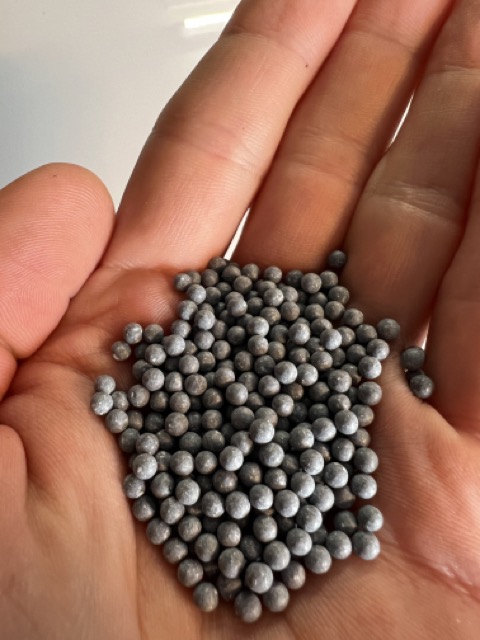
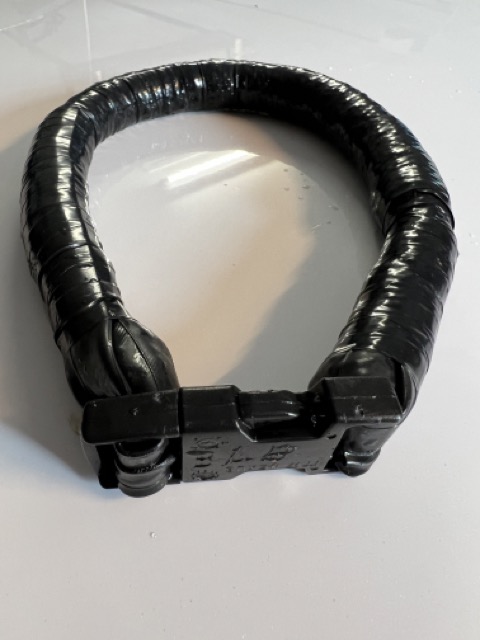
FAQ
How Heavy Should my weight belt be for diving?
Perform a surface buoyancy check. Freedivers should float at where the neck meets the shoulder with a full breath of air. Scuba Divers should sink with an empty BCD and a full breath of air. This is impossible to answer without knowing a number of factors and your intended use. It could be as little as no weight to as much as 22 lbs (10 kg or more).
For a more accurate result:
- As a freediver try diving down and finding your neutral buoyancy point. It should be at half of your intended depth (if your regularly diving to 20 ft/m you should be neutral at 10 ft/m
- As a scuba diver try to descend at the end of your dive with an empty tank. if you can still descend you have enough weight.
How do you calculate dive belt weight?
It’s complicated. You must know a number of factors all of which contribute to an accurate answer. A rule of thumb for scuba diving is 10% of your body weight for cold salt water and 5% for warm salt water diving. Take 2 lbs or 1 kg off for fresh water. If you have a high BMI (Body mass index add 2-5%).
Do Scuba Divers still use weight belts?
Most divers use integrated weight systems. These are usually pockets integrated into a BCD (buoyancy compensation device) that can easily be ditched in an emergency. They are more comfortable than weight belts.
Where do you put weights on a dive belt?
As close to your center of buoyancy as possible. For freedivers they should be evenly distributed around the belt opposite each other. For scuba divers they are either in front of the diver or behind the diver nearest the tank depending on how the diver sits in the water when upright.
Why do freedivers wear weight belts?
To make them negatively buoyant on the second half of their dive. A properly weighted freediver will e positively buoyant on the first and last 1/4 of their dive and negative on the 2nd and 3rd quarter near the bottom.
How much lead weight do I need for diving?
This will vary based on a number of factors and is most easy to discover when in the water by performing a buoyancy check.
What Weights are best for freediving?
Lace-through weights are often best for freediving because they stay in place once they are threaded on the belt. Bullet weights are good for divers who want to adjust weight position easily.
When buying weights and a belt it is important to get weights that fit on the belt. Sometimes coated weights or even bullet weights won’t be compatible with thicker marseilles style belts
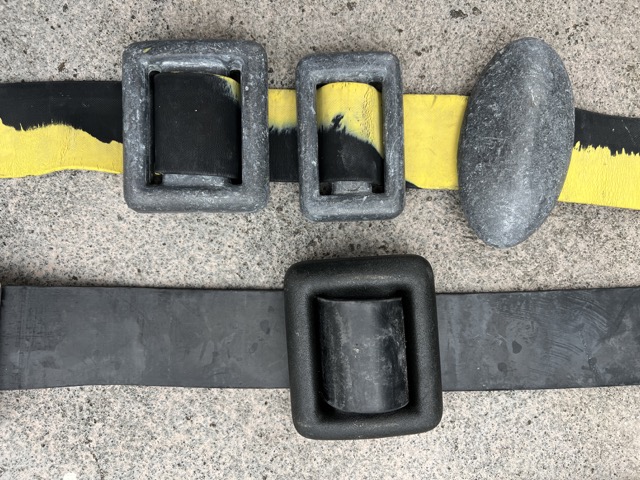
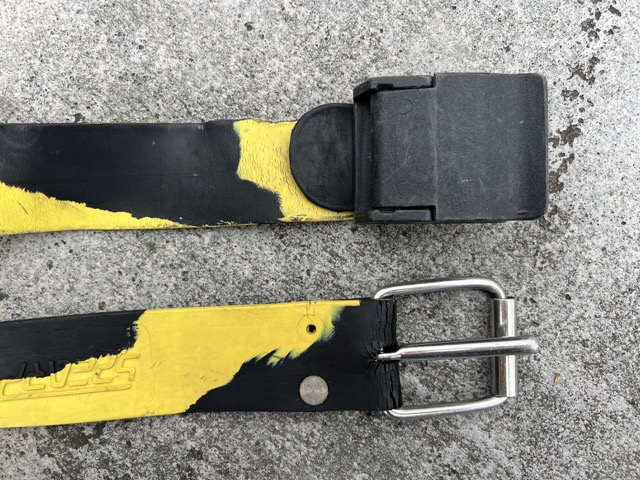
References
- Human body density and fat of an adult male population as measured by water displacement
https://doi.org/10.1093/ajcn/20.4.305 - Body composition – Wikipedia
https://en.wikipedia.org/wiki/Body_composition#:~:text=Human%20fat%20has%20a%20density,from%20the%20overall%20body%20density. - Compact Bone Mineral Density of the Normal Human Radius
https://www.tandfonline.com/doi/pdf/10.3109/02841867809127938#:~:text=The%20normal%20ranges%20for%20bone,1.35%20g%2Fcm3%20for%20men.

